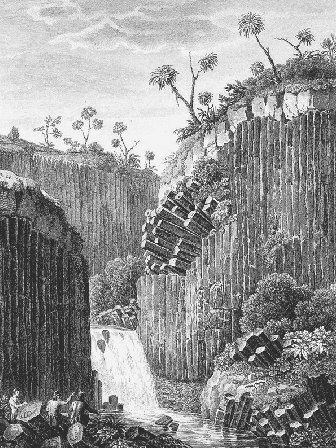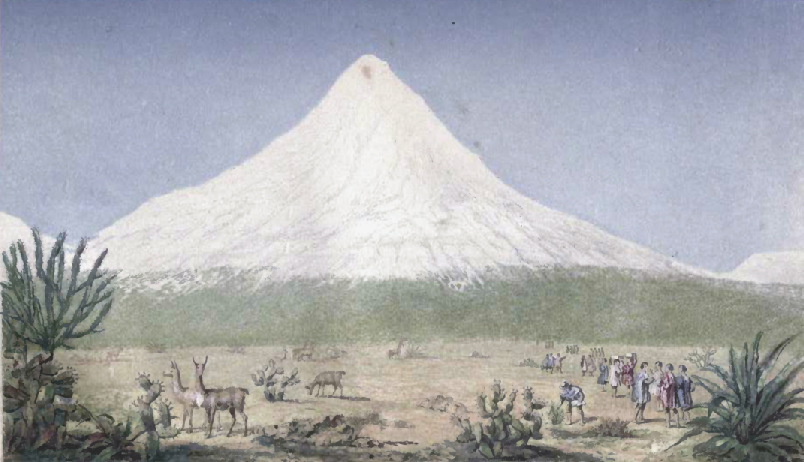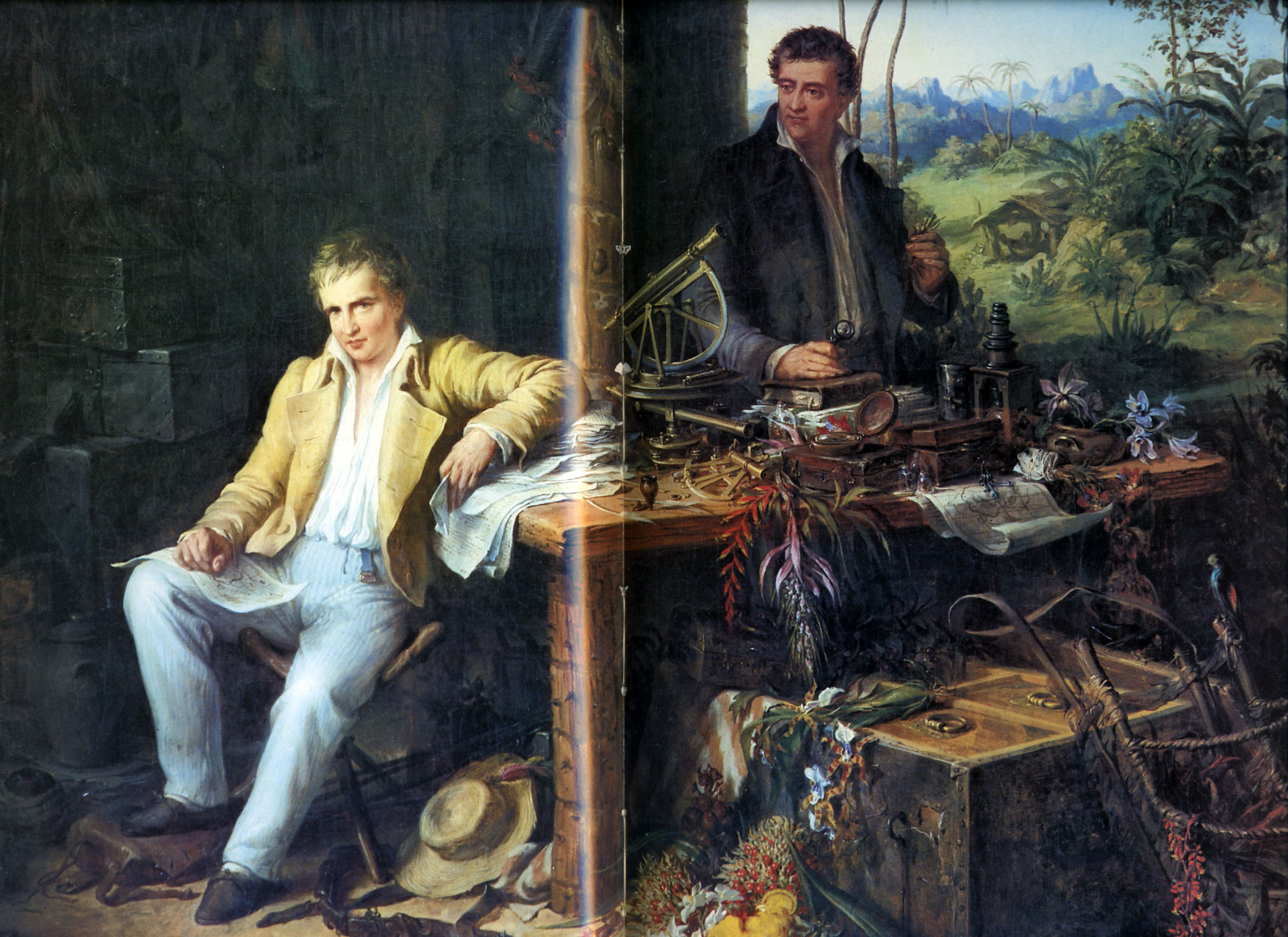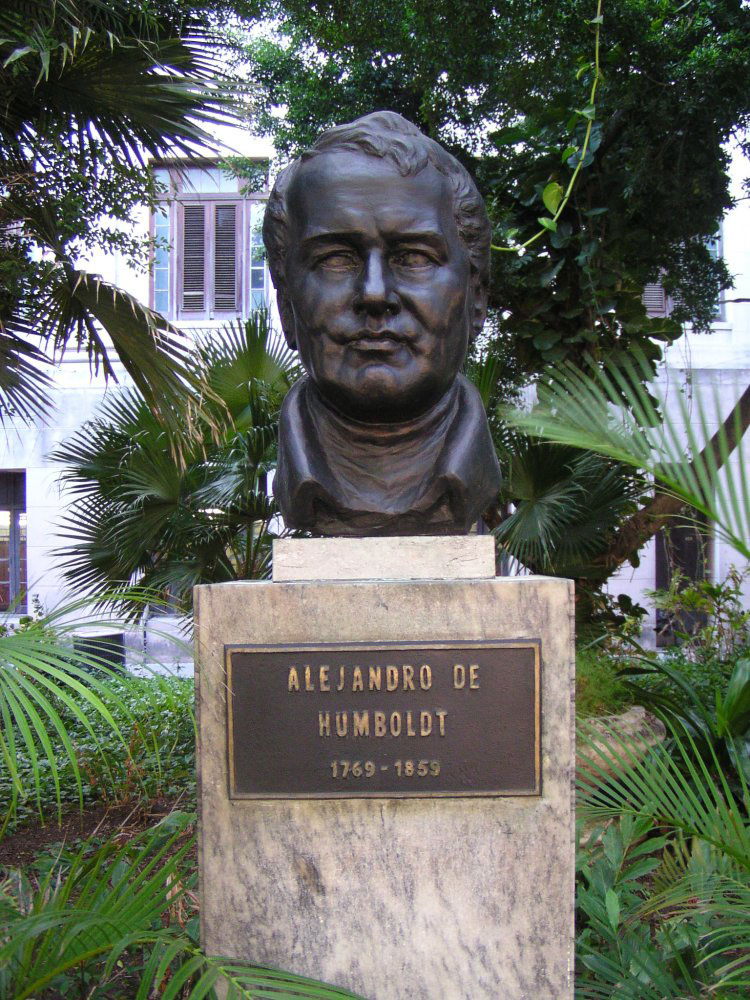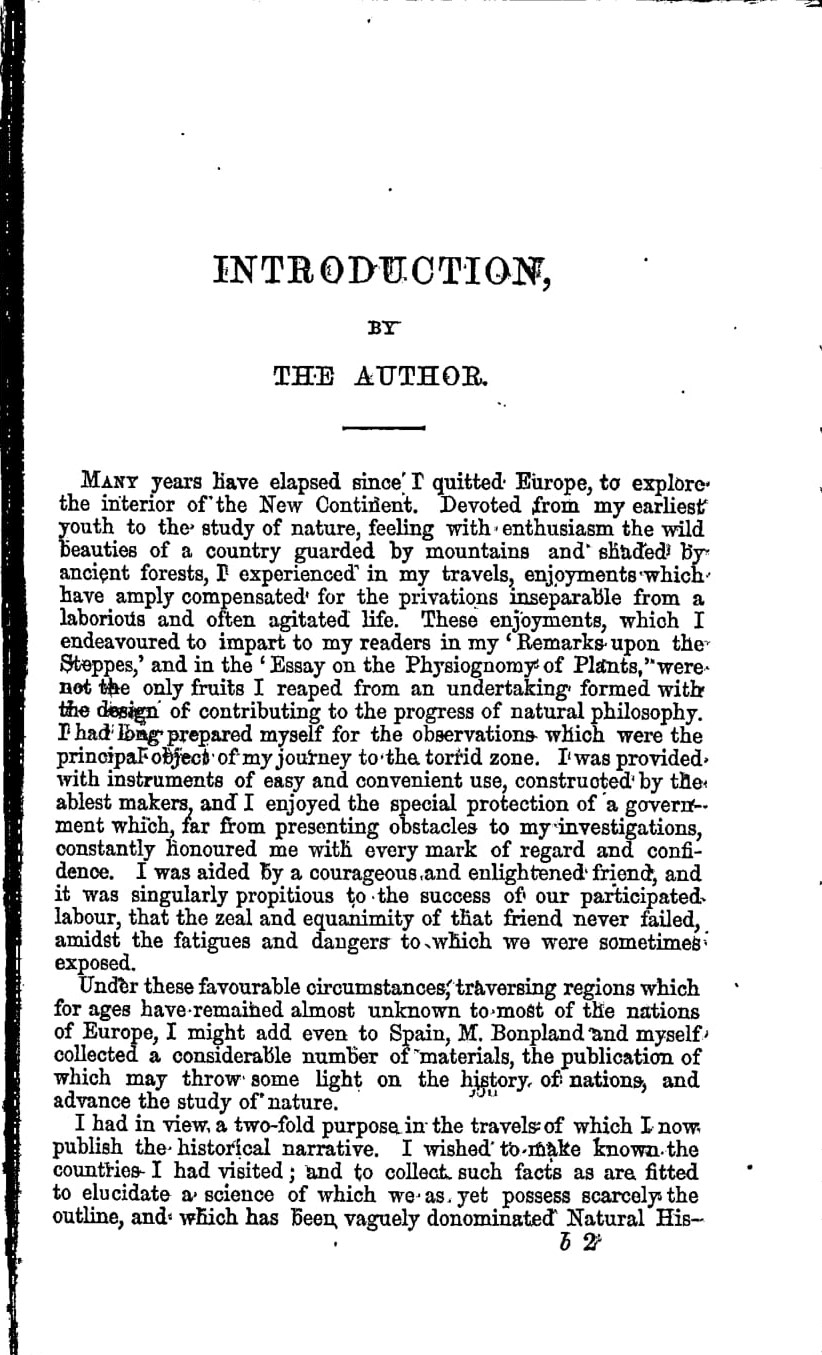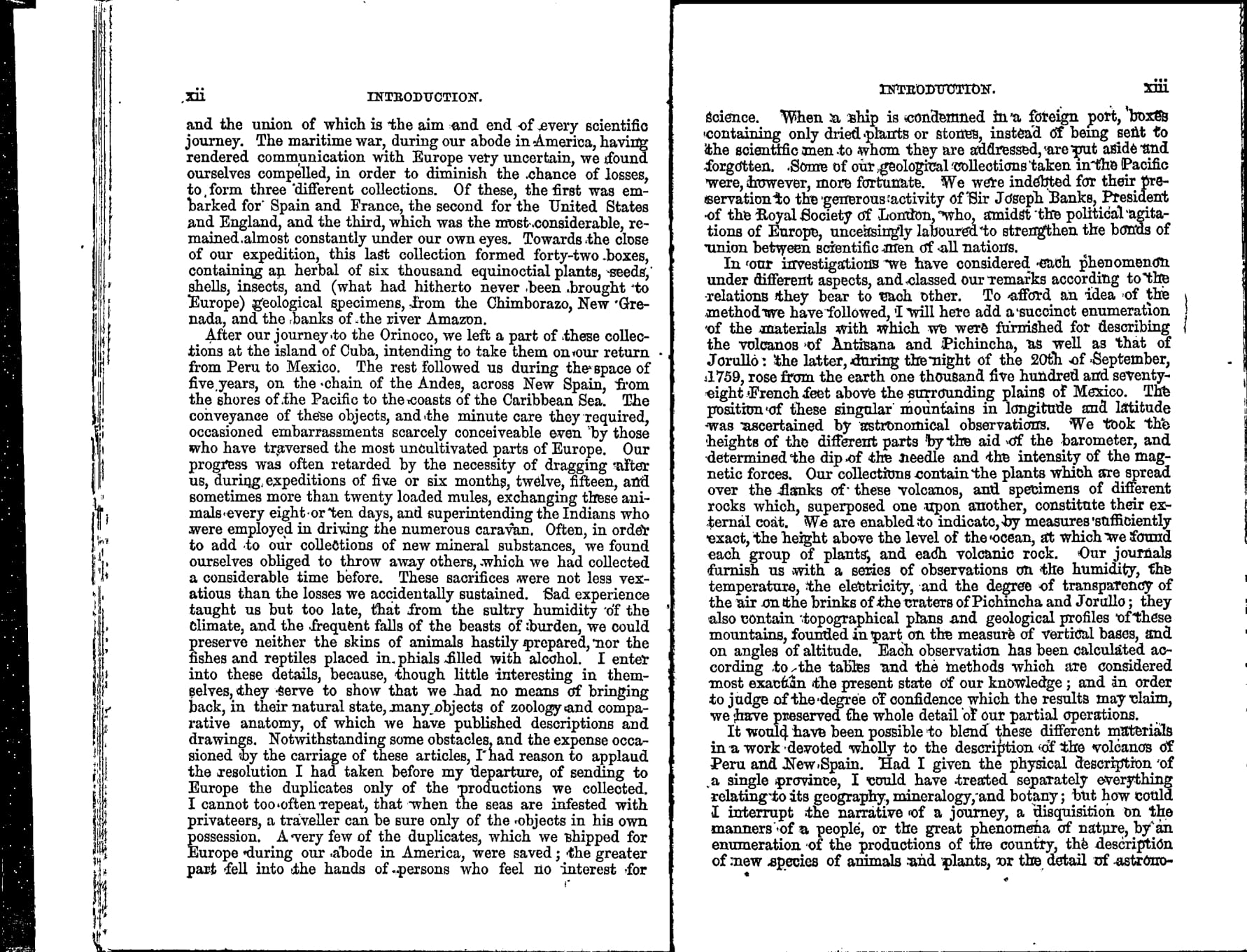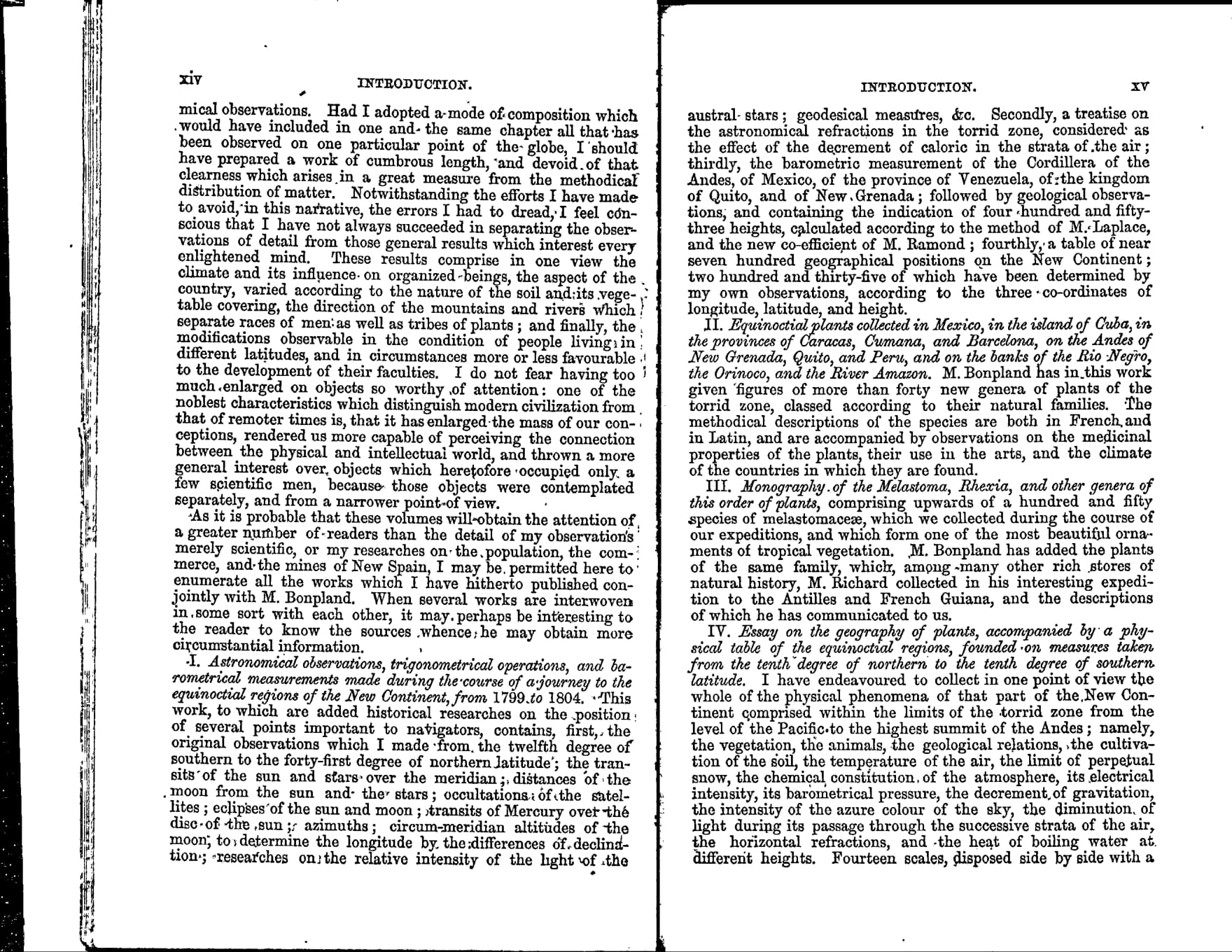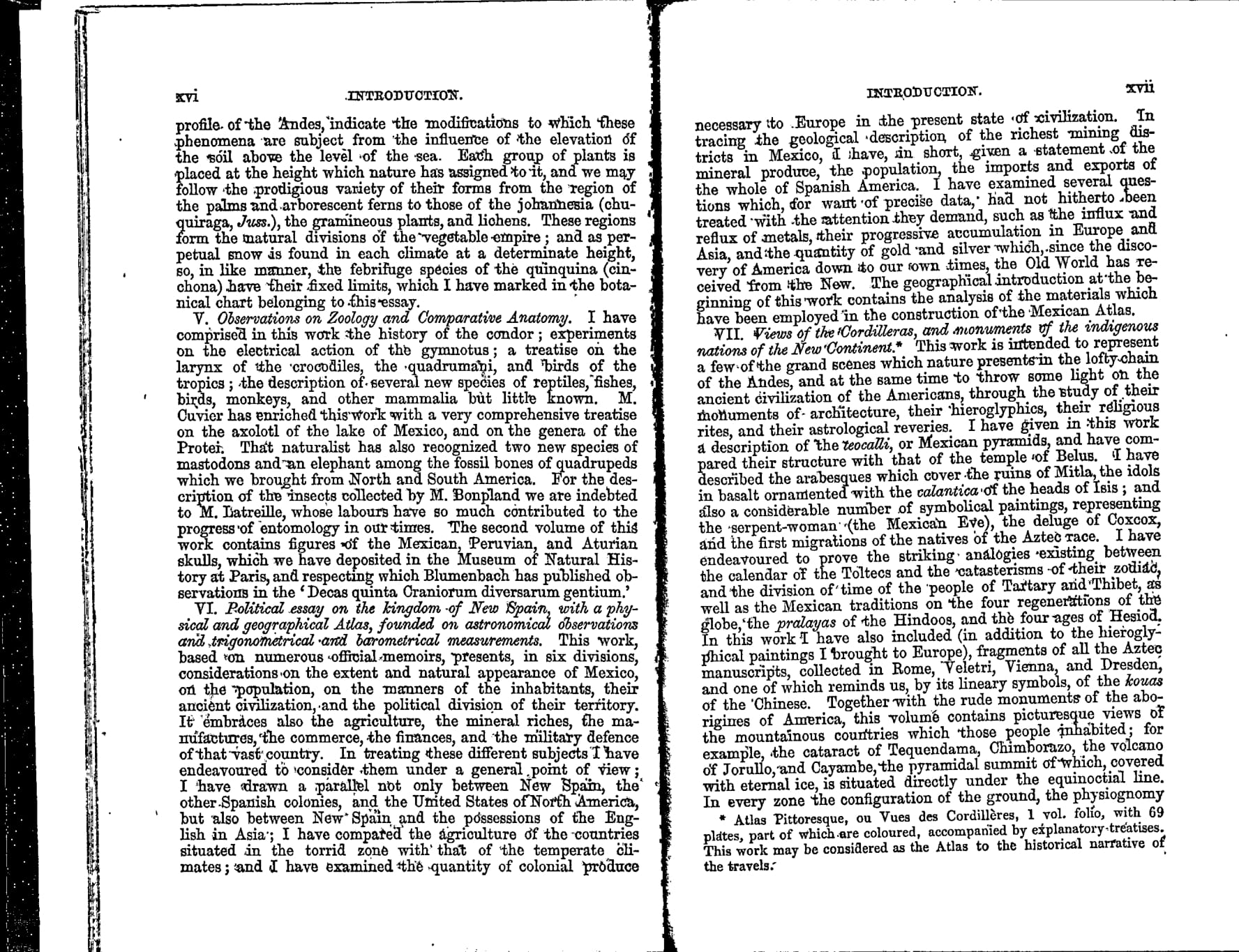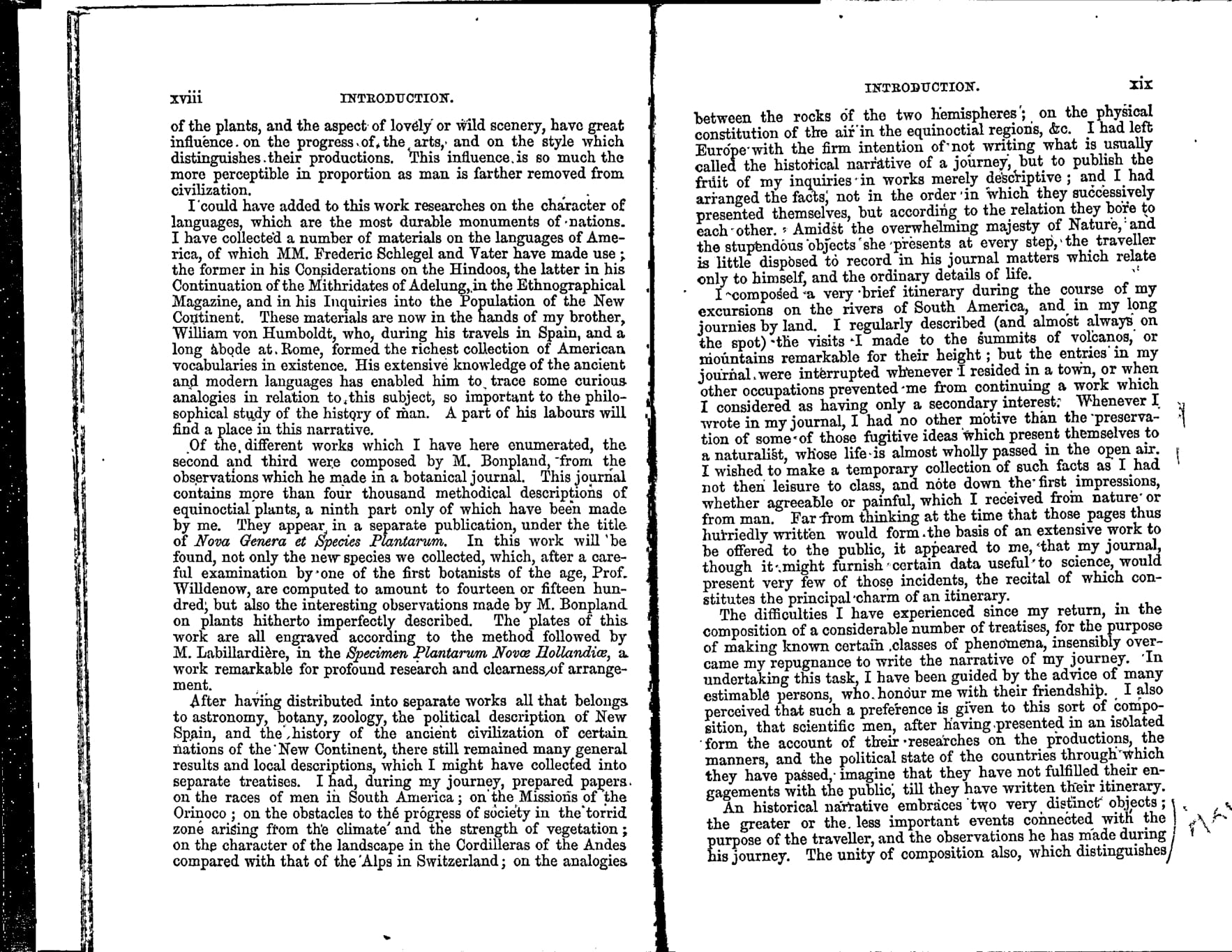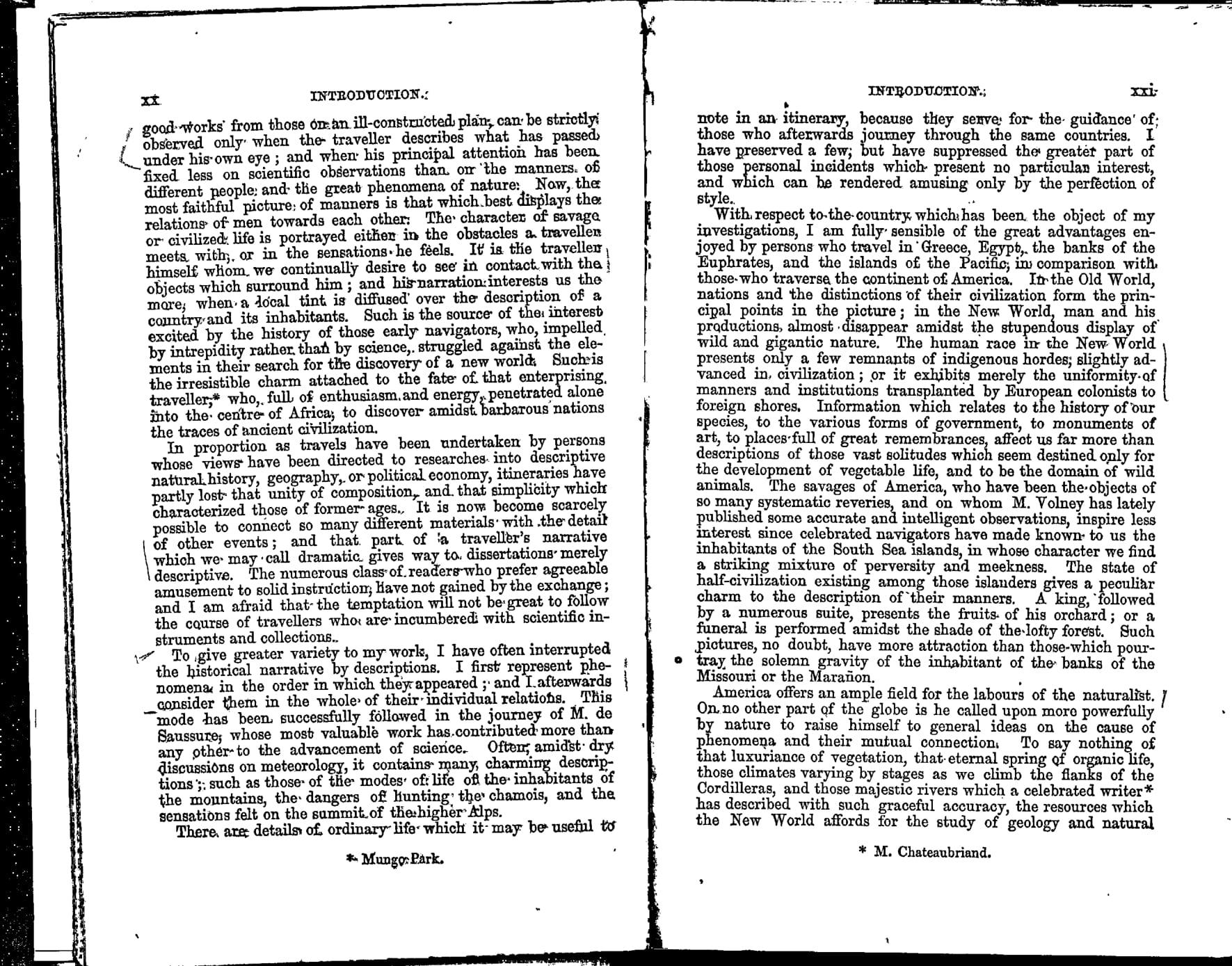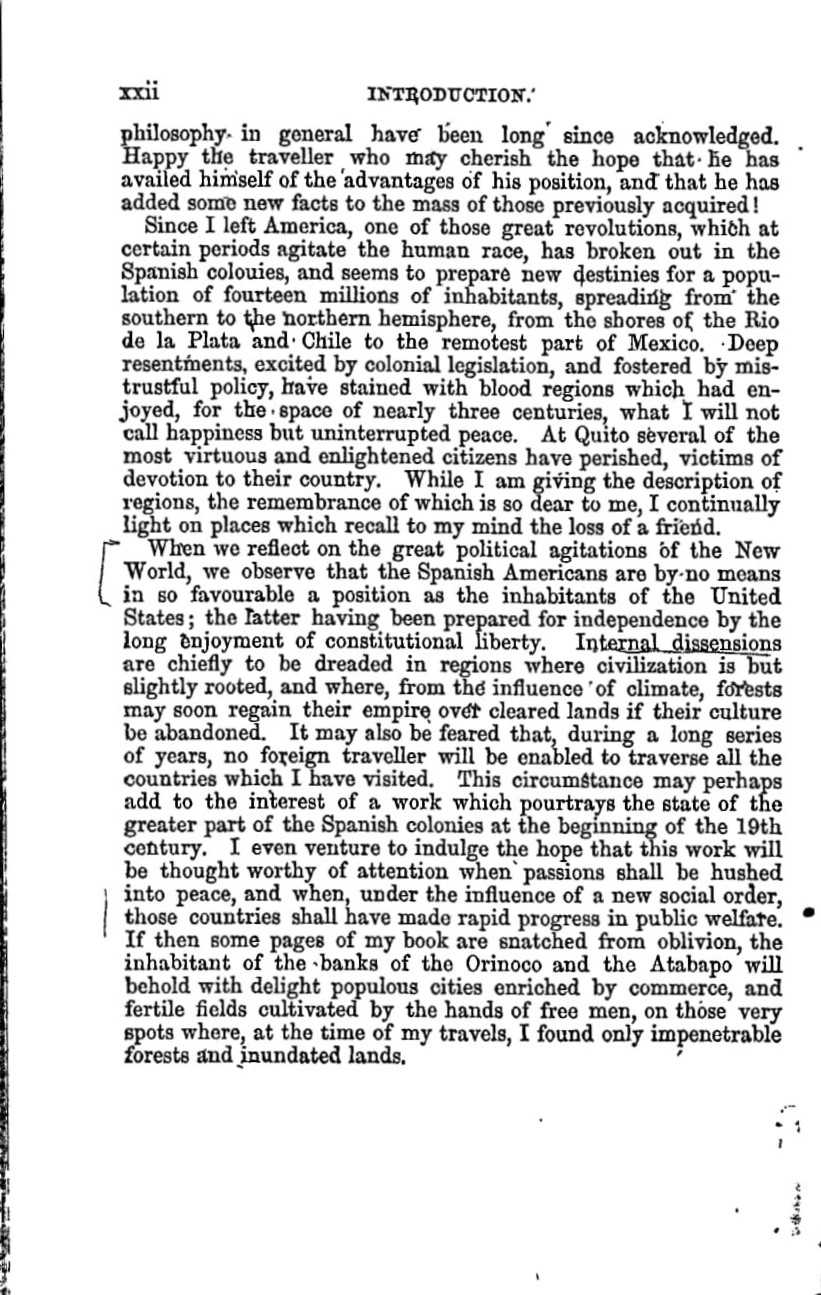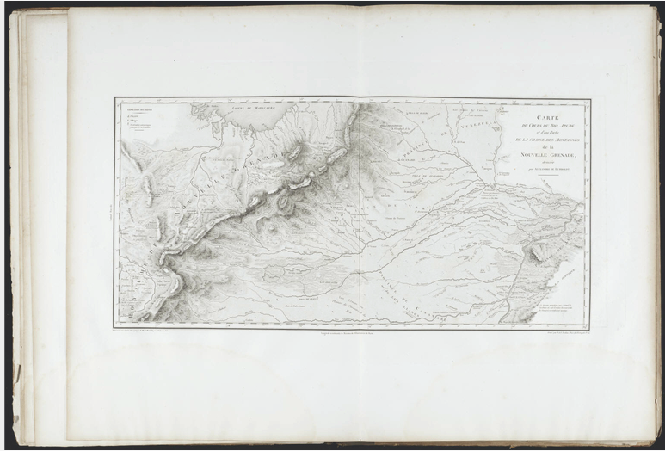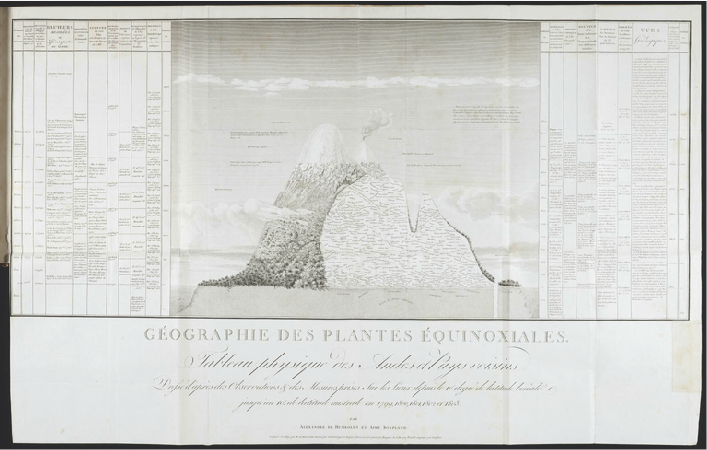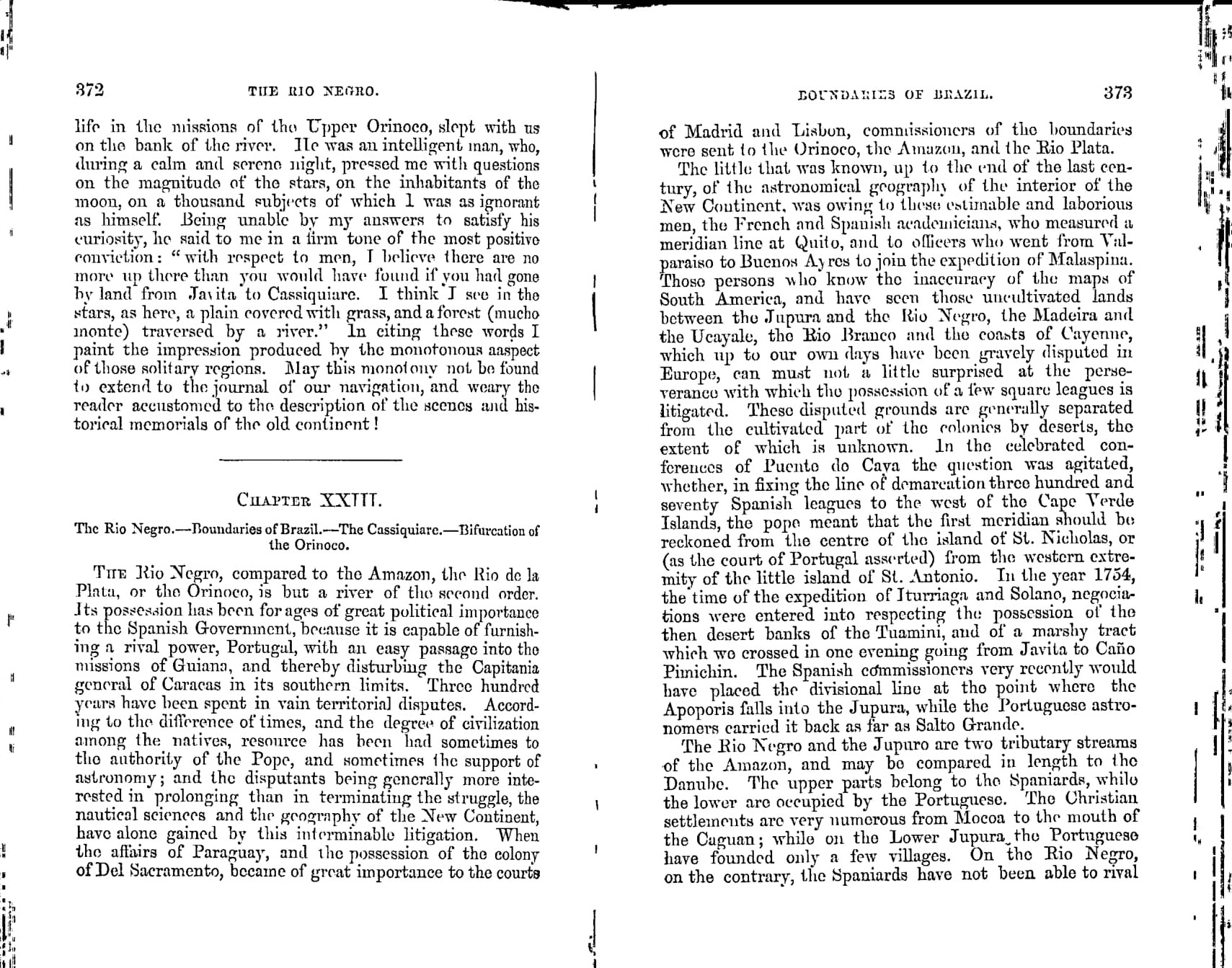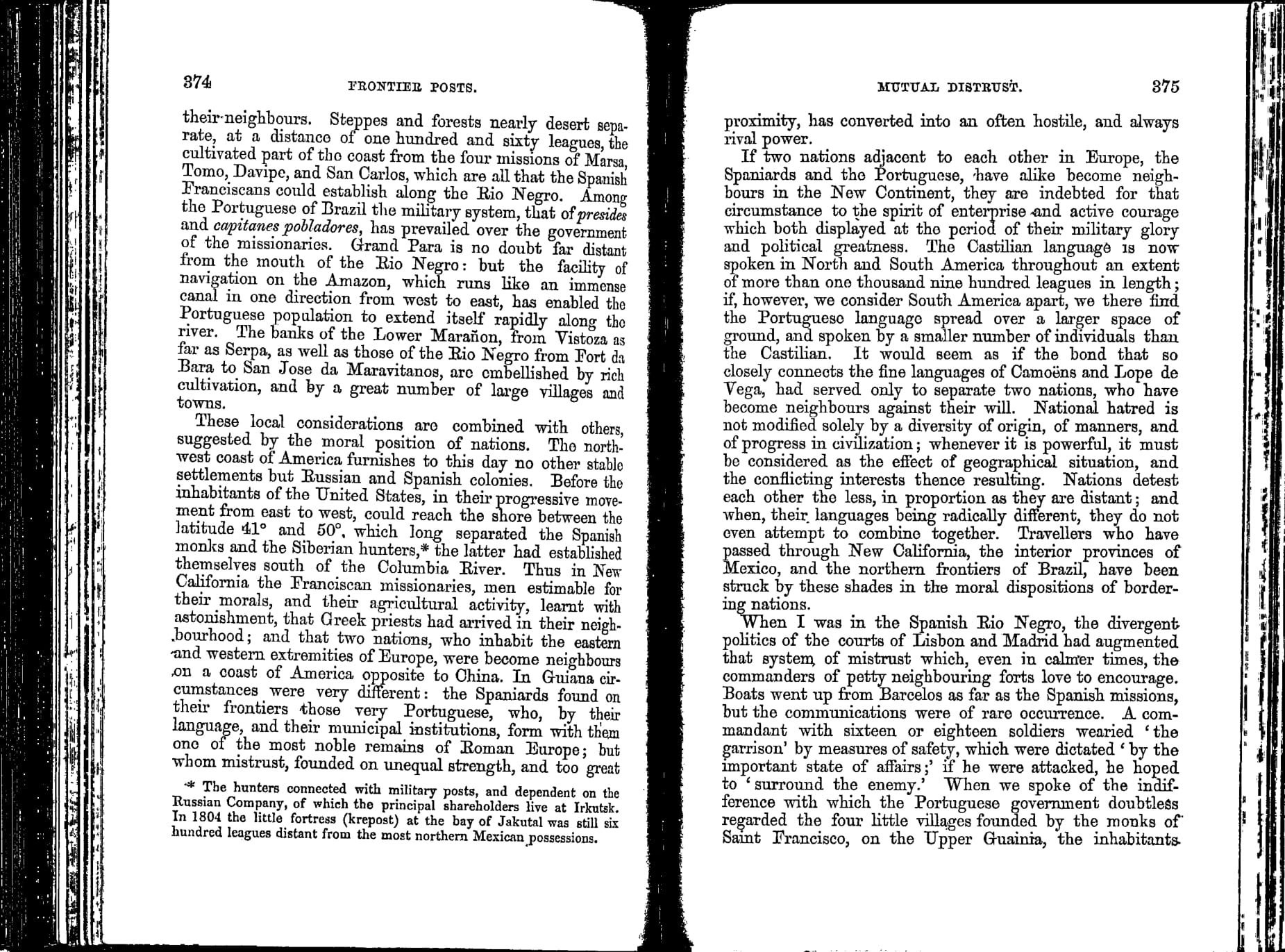With every foot of available space in his dugout canoe filled with caged exotic birds, botanical specimens, and monkeys (often left to roam about at will), Alexander von Humboldt made his way up Venezuela's Orinoco River in 1800 (see the source 'Map of Casiquiare Canal'). Despite the chaos of rapids, mosquitoes, jaguars, and alligators, Humboldt rarely failed to make and record measurements of barometric pressure, the magnetic field, and the air and water temperature with his many state-of-the-art apparata. All the while, he was mapping the river system, collecting rocks and fossils, and making ethnographic observations about the Indian peoples of the upper Orinoco. Two years later, after traveling throughout Colombia, Cuba, Ecuador, and Peru, he climbed what was considered to be the tallest mountain in the world, the "Chimborazo peak" illustrated in the sources, setting a new altitude record at over 19,000 feet.
From 1799-1804, Alexander von Humboldt (1769-1859) and his partner Aime Bonpland engaged in a 6,000 mile journey around northern South America and Mexico. Humboldt, wealthy Prussian aristocrat, funded the expedition himself after receiving permission from the king of Spain to collect botanical and geological specimens from any part of Spanish America. In the course of the journey, they collected over 60,000 new plants, including 3,000 that were unknown in Europe. It was one of the first expeditions in modern Western history that was done solely for the purpose of scientific research.
Humboldt, though trained as a geologist, was well versed in every field of natural history and tended to combine different disciplines in making his observations. He thus is considered to be the father of "plant geography," and claimed to seek the "unity of nature" through observations about astronomy, botany, mineralogy, zoology, meteorology, and ethnology.
He was immensely popular during his lifetime, with cities and institutions named in his honor from Prussia to Venezuela. His appeal was partially due to his striking achievements as a naturalist, but it was his spirit--which combined romanticism, the enlightenment, a love of adventure, and liberalism--that immortalized him. He stressed that humanity must appreciate the glories of nature and that scientific progress should be used to benefit all of mankind. According to the historian Douglas Botting, Humboldt's liberalism and faith in reason led him to believe in the natural equality of all men. He was thus fiercely opposed to slavery and lamented the plight of the impoverished indigenous populations of Latin America, who he feared were rapidly losing their cultural identity and integrity due to European coercion (Botting 1973). Humboldt's genuine awe about American nature, recorded in his multivolume Personal Narrative of Travels to the Equinoctial Regions of the New Continent during the years 1799-1804, inspired other naturalists to visit the region, including Charles Darwin.
For Latin Americans, Humboldt also represented a new kind of scientist. Though he was still a European working with the permission of the Spanish crown, his interest in South America was as a field in which science could be conducted, not merely a land from which to extract profitable plants and minerals. In this sense, Humboldt prefigured later scientists from Europe and the United States in the nineteenth and twentieth centuries, such as Hiram Bingham, whose scientific expeditions in Latin America earned them renown for purely scholastic discoveries. Latin America has become something of a laboratory where foreign archaeologists, anthropologists, mineralogists, botanists, and ecologists compete to extrapolate knowledge that benefits a scientific community which--to a large extent--continues to exclude Latin America.
Questions for further exploration:
- Darwin cites Humboldt seventeen times in his The Voyage of the Beagle. Using The Voyage of the Beagle and Humboldt's Personal Narrative as sources, what parallels exist between the work of Humboldt and Darwin? Did Humboldt influence Darwin's famous theory of evolution?
- Humboldt's "universal" approach to science stressed research and integration of all the known aspects of natural history in order to get at the larger cosmological picture. How does his work compare with that of creole and Spanish scientists working in Latin America during the late colonial era (such as Caldas, Mutis, and others)? Do Humboldt's methods and cosmology have resonance with the larger pattern of Latin American science in the later colonial era, or was he using a distinctly European approach that was novel to Latin America?
- How did Humboldt's expedition to Latin America effect European perceptions of nature?
- What evidence does Humboldt find in Latin American nature to support his ideas about the "unity of nature"? See his Personal Narrative, especially the introduction, for examples.
Further reading:
Botting, Douglas. Humboldt and the Cosmos. New York: Harper and Row, Publishers, 1973.
Helferich, Gerald. Humboldt's Cosmos: Alexander von Humboldt and the Latin American Journey that Changed the Way We See the World. New York: Gotham Books, 2004.
Sachs, Aaron. The Humboldt Current: Nineteenth Century Exploration and the Roots of American Environmentalism. New York: Viking, 2006.
Taylor, Bayard. The Life, Travels And Books Of Alexander Von Humboldt. Whitefish, MT: Kessinger Publishing, 2007.
Ugarte, J. Cremades, F.J. Dosil Mancilla, X.A. Fraga Vazquez, eds. Humboldt y la ciencia Espanola. Sada, A Coruna: Edicios do Castro, 2005.
von Humboldt, Alexander. Cosmos: A Sketch of the Physical Description of the Universe. Baltimore: Johns Hopkins University Press, 2006.
